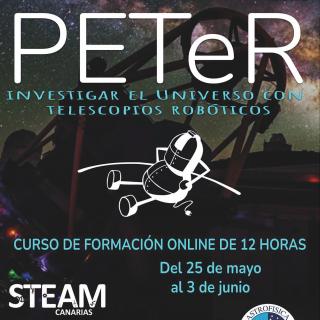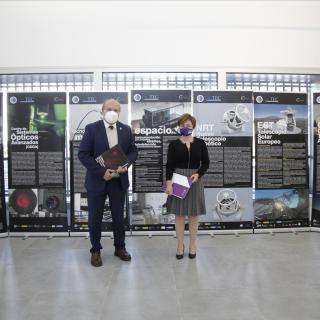
Registration is now open for the training course "PETeR: Investigating the Universe with robotic telescopes", which will take place between 25 May and 3 June for teachers in the Canary Islands, and between 26 May and 10 June for teachers in the rest of Spain. One of the main objectives of the Educational Project with Robotic Telescopes (PETeR) of the Instituto de Astrofísica de Canarias (IAC) is to train teachers and educators in astronomy and in the use of robotic telescopes as tools for students to develop their scientific and technological skills through guided research projects. In the
Advertised on




